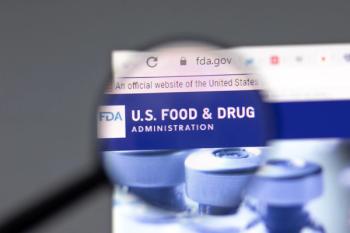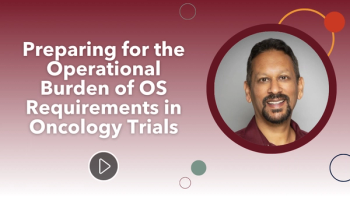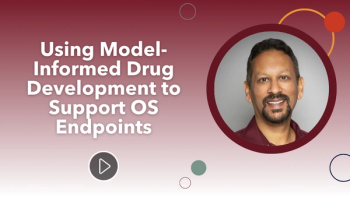
- Applied Clinical Trials-06-01-2010
- Volume 0
- Issue 0
Integrated Cardiovascular Safety
Employing a three-component risk exclusion model in the assessment of investigational drugs.
The prospective exclusion of unacceptable cardiovascular risk is a critical component of drug safety evaluation within preapproval clinical development programs. Proarrhythmic cardiac safety assessment assumed its central role following the publication in 2005 of ICH E14,1 which along with the nonclinical ICH S7B2 was precipitated by a series of cardiac adverse drug reactions in the '80s and '90s and the associated marketing withdrawals. More recently, an FDA Guidance for Industry has focused on cardiovascular safety assessments during the development of new anti-diabetic therapies for Type 2 Diabetes mellitus.3 Cardiovascular events of regulatory interest include nonfatal myocardial infarction (MI), nonfatal stroke, and cardiovascular death.
(Medioimages/Photodisc/getty images)
In each case, a three-component risk exclusion model is employed: clinical science, regulatory science, and statistical science. This article discusses the model, describes how it is implemented in ICH E14 and the FDA Guidance, and notes that a similar approach may be implemented in additional areas within the domain of integrated cardiovascular safety as assessment horizons continue to broaden.
Three-component model
The approach to excluding unacceptable risks employed in both documents of interest can be conceptualized in a three-component model:
- Clinical science: clinical judgments concerning absolute and relative risks
- Regulatory science: benefit-risk judgments at the public health level and choice of thresholds of regulatory interest
- Statistical science: accepted statistical methodologies for determining whether or not regulatory thresholds are breached. Confidence intervals play a central role in this methodology.
It should be noted that estimation of the actual magnitude of absolute or relative risk is not the goal of this model. Rather, its role is to alert sponsors and regulators of unacceptable risks.
Thresholds of regulatory concern are products of the interaction between clinical and regulatory science, and are operationalized in the guidances discussed herein as the upper limit of confidence intervals (CIs) placed around point estimates of risk obtained from a single study or a meta-analysis involving a group of studies. Given the central role of CIs, the rationale for their use is reviewed in this section. Readers who are already well versed in this statistical methodology may wish to proceed to the following section.
Consider a clinical trial in which we assess the magnitude of a cardiac parameter in two groups of subjects (two treatment groups), one receiving placebo and the other receiving an investigational drug. The drug's treatment effect can be captured by a point estimate, obtained here by subtracting the mean magnitude of the parameter for subjects in the placebo treatment group from its mean magnitude for subjects in the drug treatment group, in conjunction with CIs placed around this estimate.
If these mean magnitudes were to be truly equal, the point estimate of the treatment effect would be zero, written here as 0.00. However, even if the test drug truly has no pharmacodynamic effect, this "perfect scenario" would not realistically be seen. The point estimate would be close to 0.00, with the upper limit of the CI lying above 0.00 and the lower limit lying below 0.00. An example of this occurrence can be written as 0.05 (-1.00, 1.10). [Note: In such cases, the upper and lower limits lie equidistant from the point estimate.] Given that zero is encompassed by the lower and upper limits of the CI, there is no statistically significant evidence that the test drug changes the parameter's magnitude more than the placebo.
Consider now a scenario in which the treatment effect point estimate is 8.00, and the lower and upper limits of the 95% CI placed around this point estimate are 6.50 and 9.50, respectively. Given that zero is not encompassed by the lower and upper limits (i.e., the lower limit lies above 0.00), there is statistically significant evidence that the test drug changed the cardiac parameter more than the placebo. We can go one step further and state the following: These data are compatible with a treatment effect as small as 6.50 and as large as 9.50 in the general population, and our best estimate is a treatment effect of 8.00.
Relative risk
Confidence intervals can also be usefully employed in evaluating relative risk. Consider testing an investigative drug against an active compound on the market. The number of specified cardiovascular events of concern in each treatment group can be compared in terms of relative risk as captured by a point estimate, defined here as the occurrence of the adverse event in the test drug treatment group divided by its occurrence in the comparator treatment group, in conjunction with CIs placed around this estimate.
Additional Reading
If the test treatment and the comparator were to be truly equal in terms of the risk of a specified adverse event, the point estimate of the risk ratio would be unity, written here as 1.00. This "perfect scenario" would not realistically be seen, and the point estimate would be close to 1.00, with the upper limit of the CI lying above 1.00 and the lower limit lying below 1.00. An example of this occurrence can be written as 1.05 (0.95, 1.17). [Note: In such cases, the upper and lower limits do not lie equidistant from the point estimate, with the upper limit lying farther away than the lower limit.] Given that unity is encompassed by the lower limit of 0.95 and the upper limit of 1.17, there is no statistically significant evidence that the rate of occurrence of the adverse event differs between the test drug and the comparator.
Consider now a scenario in which the risk ratio is 1.50, and the lower and upper limits of a two-sided 95% CI are 1.35 and 1.68, respectively. Given that unity is not encompassed by the lower and upper limits (i.e., the lower limit lies above 1.00), there is statistically significant evidence that the adverse event occurs more often in the test drug treatment group than the control treatment group. We can go one step further and state the following: These data are compatible with as little as a 35% increase and as much as a 68% increase in risk of the adverse event in the general population, and our best estimate is an increase in risk of 50%.
QT interval prolongation
The ICH E14 Thorough QT/QTc Study (TQT study) is a clinical trial dedicated to evaluating a drug's liability to prolong the QT interval, as seen on the surface electrocardiogram, in a tightly controlled environment. QT interval prolongation is considered a surrogate for the clinical endpoint of ultimate interest, a potentially fatal arrhythmia called Torsades de Pointes. Detailed descriptions can be found in other sources,4-7 but here the focus is on the implementation of the three-component risk exclusion model to determine unacceptable risk.
An increase in QT prolongation below the limit of regulatory concern is demonstrated if the upper limits of 90% CIs placed around the point estimates of the treatment effect (i.e., drug-induced QT prolongation) at all time points assessed lie below 10 milliseconds (msec). The operational definition of unacceptable risk as presented in ICH E14, therefore, is an observation of QT prolongation of 10 msec or greater. In practice, however, unacceptable risk is assessed in the context of additional factors: The expected therapeutic benefit of the drug, the severity of the indication for which it is being developed, the availability (or not) of other drugs for this indication, and the safety and efficacy profiles of any other drugs for the condition.
Consider the hypothetical scenario in which an investigational drug is intended to treat a debilitating disease that severely incapacitates patients for a period of approximately 12 months before leading to a painful death. If no other treatment is currently available, the drug has the potential to be reasonably effective, and if it has an otherwise acceptable safety and tolerability profile, QTc prolongation somewhat greater than 10 msec may prove acceptable to regulatory agencies. This regulatory latitude is an important consideration for sponsors. The words "negative study" (upper limits of all CIs less than 10 msec) and "positive study" (one or more upper limits equal to or greater than 10 msec) as used in ICH E14 suggest an inflexible approve/do not approve dichotomy that is almost certainly not the case.4,8 Sponsors who see a degree of QT prolongation for an investigational drug in early studies are encouraged not to reflexively terminate its development, to consider the drug's overall cardiac safety and benefit-risk profiles, and to engage in discussion with regulatory agencies.
Anti-diabetic drugs
The FDA guidance of interest here3 made recommendations concerning "how to demonstrate that a new anti-diabetic therapy to treat type 2 diabetes is not associated with an unacceptable increase in cardiovascular risk." In contrast to the TQT study, the events of regulatory interest are clinical endpoints. These include, but are not limited to, cardiovascular mortality, MI, stroke, acute coronary syndrome, and urgent revascularization procedures.
A composite endpoint can be usefully employed since the number of individual events may be too low to meaningfully compare those occurring in the test drug treatment group with those in the comparator group. The traditional Major Adverse Cardiovascular Events (MACE) composite endpoint includes nonfatal MI, nonfatal stroke, and cardiovascular death, and is acceptable to FDA in this regard.
Once a planned preapproval clinical development program has been completed, the results from each study are used in a required meta-analysis that explores the drug's MACE liability. Since the cardiovascular safety of the test drug is judged against that of a comparator, a risk ratio point estimate and associated CIs are of interest. Primary interest falls on the upper limit of a 95% CI placed around the relative risk ratio generated by the meta-analysis. Three scenarios are discussed:
- If the upper limit is equal to or greater than 1.8, a drug would be deemed to have an unacceptable risk, since it is possible to state with 95% certainty that the drug could have an 80% or greater excess risk compared with the comparator drug. In this case, "an additional single, large safety trial should be conducted that alone, or added to other trials, would be able to satisfy this upper bound before NDA/BLA submission."3
- If the upper bound is equal to or greater than 1.3 and also less than 1.8, and the overall benefit-risk analysis presented at submission supports marketing approval, "a postmarketing trial generally will be necessary to definitively show that the upper bound of the two-sided 95% confidence interval for the estimated risk ratio is less than 1.3."3 That is, for drugs that are not deemed to have unacceptable risk at this point, later studies must show that a more comprehensive assessment yields a risk ratio less than 1.3 (a value considerably lower than the 1.8 value used in the first step).
- If the upper bound is less than 1.3 and the overall risk-benefit analysis presented at submission supports marketing approval, "a postmarketing cardiovascular trial generally may not be necessary."3
It is again of interest to note that while the guidance states precise CIs of interest, a certain degree of regulatory decision-making latitude is possible. While the thresholds of regulatory concern are the main criteria of interest, the guidance notes that the magnitude of the point estimate will be considered. That is, an upper limit of 1.75 (satisfying the 1.8 criterion) associated with a point estimate of 1.60 is likely to be viewed less favorably than the same upper limit associated with a point estimate of 1.40.
Present day
This article has provided an overview of cardiovascular safety assessment during preapproval drug development with the goal of prospectively excluding unacceptable risks. While evaluation of QT prolongation remains a central component, the list of events of regulatory interest has increased, as evidenced by the anti-diabetes drugs FDA guideline.
Assessment horizons within the domain of integrated cardiovascular safety may continue to broaden. For example, Borer et al. observed that early phase trials of noncardiac drugs should evaluate various prespecified parameters of interest including, but not limited to, QT intervals and other ECG parameters, body weight, blood pressure, blood lipid concentrations, coagulation profiles, cardiac dimensions, and left ventricular size and function.9
The three-component model may also prove useful in such assessments. Given that the third component (statistical methodology) is well established, the challenge in such cases will likely be maximizing the interaction between clinical and regulatory science when choosing the thresholds of regulatory concern. It will be of considerable interest to follow future developments in this domain.
J. Rick Turner, PhD, is Senior Scientific Director, Cardiac Safety Services, at Quintiles, 4820 Emperor Blvd, Durham, NC 27703 email:
References
1. ICH Guideline E14, The Clinical Evaluation of QT/QTc Interval Prolongation and Proarrhythmic Potential for Non-Antiarrhythmic Drugs, May 2005,
2. ICH Guideline S7B, The Non-Clinical Evaluation of the Potential for Delayed Ventricular Repolarization (QT Interval Prolongation) by Human Pharmaceuticals, May 2005,
3. FDA Guidance for Industry, Diabetes Mellitus—Evaluating Cardiovascular Risk in New Antidiabetic Drugs to Treat Type 2 Diabetes, December 2008,
4. J.R. Turner, "Interpreting the Interval: The Design, Methodology, Analysis, and Interpretation of the ICH E14 Thorough QT/QTc Study," European Pharmaceutical Contractor, 159, 34-48 (2010).
5. J.R. Turner and T.A. Durham, Integrated Cardiac Safety: Assessment Methodologies for Noncardiac Drugs in Discovery, Development, and Postmarketing Surveillance (John Wiley & Sons, Hoboken, NJ, 2009).
6. J. Zhang and S.G. Machado, "Statistical Issues Including Design and Sample Size Calculations in Thorough QT/QTc Studies," Journal of Biopharmaceutical Statistics, 18, 451-467, 2008.
7. C.M. Beasley Jr, A. Dmitrienko, M.I. Mitchell, "Design and Analysis Considerations for Thorough QT Studies Employing Conventional (10s, 12-lead) ECG Recordings," Expert Review of Clinical Pharmacology, 1, 815-839, 2008.
8. V. Salvi, D.R. Karnad, G.K. Panicker, S. Kothari, "Update on the Evaluation of a New Drug for Effects on Cardiac Repolarization in Humans: Issues in Early Drug Development," British Journal of Pharmacology, 159 (1) (January 2010).
9. J.S. Borer, H. Pouleur, E. Abadie et al., "Cardiovascular Safety of Drugs not Intended for Cardiovascular Use: Need for a New Conceptual Basis for Assessment and Approval," European Heart Journal, 28, 1904-1909, 2007.
Articles in this issue
over 15 years ago
Applied Clinical Trials Digital Edition - June 2010over 15 years ago
Biosimilars Make Headwayover 15 years ago
Business and News Update June 2010over 15 years ago
Electronic Integration Costsover 15 years ago
Strategic Immunogenicity Testingover 15 years ago
ePRO vs. Paperover 15 years ago
Today's Global Site Landscapeover 15 years ago
Changing Medicines, Changing Rulesover 15 years ago
Ethics Diversity Persistsover 15 years ago
Mastering Currency FluctuationNewsletter
Stay current in clinical research with Applied Clinical Trials, providing expert insights, regulatory updates, and practical strategies for successful clinical trial design and execution.






.png)



.png)



.png)
.png)
